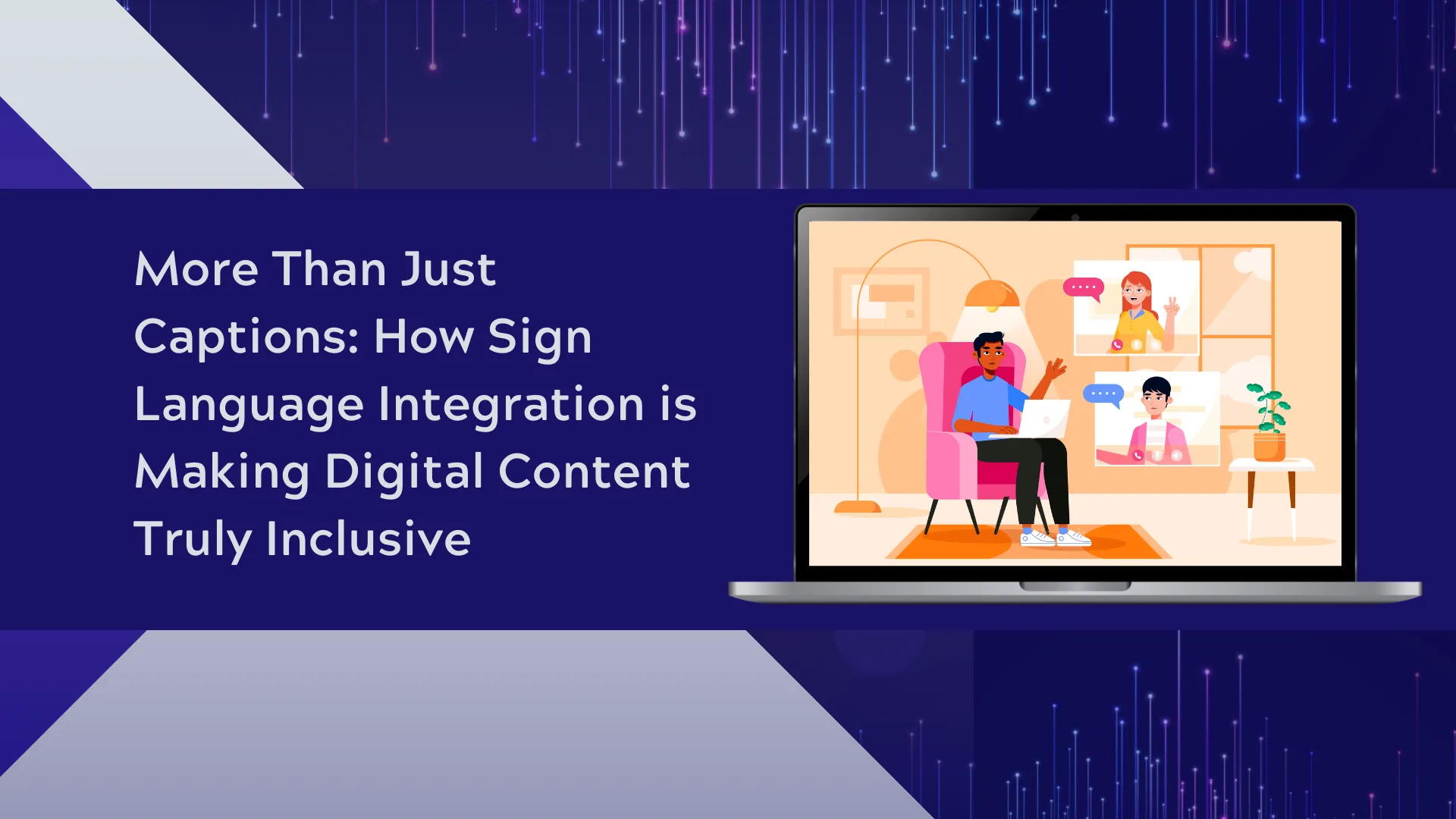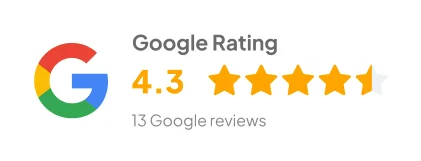In this contemporary world which is more digital-centric, sign language inclusion into a certain digital content is no more a luxury but a necessity. Of course captions add up in easing access to digital information, but they lack the ability to meet various communication needs, for instance, to some Deaf and hard-of-hearing individuals. But here’s the question: Can captions truly capture the depth, emotion, and nuances of American Sign Language (ASL)?
According to millions of ASL-reliant individuals, accessibility of digital content development has to include linguistic or cultural dimensions. The employment of sign language into mainstream media, websites, and streaming will bring about transformation into communications for all. Here is an interesting blog which describes the need for integrating ASL into digital content and how businesses and content creators can make platforms fully accessible.
The Limitations of Captions Alone
Captions are only text-based alternatives of the spoken language. They refer to a very small percentage of the Deaf and hard-of-hearing individuals, mostly those for whom ASL or some other sign language is a first language. Here is why they do not cover the entire phenomenon:
- ASL is not equal word-for-word translation of English. ASL has a grammar, syntax, and structure that are all its own. Because captions translate very straightforwardly into text, those nuances never get across the idea of sign language.
- Captions do not express the tone or expression. As with most sign languages, ASL requires facial expressions and body language for the interpretations. An ASL sentence could have a very different meaning depending on the expressions of the signer- something captions cannot replicate.
- Different cognitive processes are taken when reading captions. Most Deaf people prefer sign language to reading or written text because that is how they have been conditioned to communicate. Thus, consuming content entirely based on captions becomes quite tedious and is less engaging.
These almost make it very important to have AI-powered sign language translators and real-time ASL incorporation into digital media.
The Role of Sign Language in Digital Accessibility
Sign language accessibility slash-inclusive digital communication strategy onto social media, website, and streaming service from a compliance necessity has become an actuality. In online media, ASL is not an alternative for millions but rather a necessity.
- ASL is therefore first language for many Deaf individuals. For some, English or Spanish may be a native language, while for many Deaf users, sign language is a primary language.
- Sign language enhances digital engagement. If content is available in their native language, users are more likely to stay and engage with it on the platform.
- It is in line with legal and ethical accessibility requirements. Laws such as Americans With Disabilities Act (ADA) and Web Content Accessibility Guidelines (WCAG) underline the importance of integration of sign language in digital content.
Without ASL interpretation being imposed on online platforms, businesses are putting a huge section of their audience at risk of being excluded-towards a population consciously seeking brands that care for digital accessibility.
Methods of Integrating Sign Language into Digital Content
a) Picture-in-Picture Sign Language Interpretation
This technique provides room for a real-time ASL interpreter in a small video window-on the corner, usually-presenting Deaf users with live sign language translation with minimal distractions from the original material.
Benefits:
- Protects the integrity of the visuals of the original material while allowing for accessibility.
- Good for live events, educational videos, and corporate presentations.
- Offers a way of providing real-time sign language translation for online media.
b) Sign Language Overlays
Overlays integrate the Sign language interpretation directly into the content for user convenience without requiring switching back and forth on different screens.
Best use case:
- Educational platforms incorporating ASL translations for learning materials.
- Social media content creators integrating sign language recognition systems for better engagement.
- Marketing videos targeting inclusive digital communication strategies.
c) Dedicated Sign Language Versions
Some platforms create completely separate ASL versions of their content rather than adding sign language as an overlay.
Examples:
- Netflix and YouTube are both offering ASL-interpreted versions of some content.
- PBS has had ASL shows for children to help them from an early age with content accessibility.
All these ways reflect how the presence of ASL in marketing and media might define accessibility in the digital realms.
Benefits of Sign Language Integration
a) Improved Experience for Users
Sign language interpretation in content makes it much more engaging to deaf and hard-of-hearing people than mere captions can. Giving the users an immersive experience is possible for all users if companies can make digital platforms visually and linguistically healthily comprehensive.
b) Extending Audience Reach
A language accessible for sign at social media and other digital platforms gives a greater scope of audience that includes:
- Deaf and hard-of-hearing customers who prefer ASL rather than texts.
- Hearing audiences learning ASL; thus reach is expanded.
- Organizations looking for inclusion will continue working with brands that are sensitive to accessibility.
c) Compliance and Inclusivity
Integrating Sign Language technology in the media will also serve as compliance around all the growing global regulations about digital accessibility and a form of proof that such organizations endorse diversity, equity, and inclusion (DEI).
Challenges and Considerations
There are some challenges to be addressed in as much as the integration of ASL in the digital platforms has benefits.
- Resource Allocation: Hiring professional interpreters or employing AI-powered sign language translates incurs investments in both time and money.
- Interpreter Accuracy and Quality: The machines work with machine learning to build their sign language interpretation systems. But, it is highly advised to use human interpretation, as it is still under developing stage.
- Technological Limitations: Real-time sign language translation technology is improving continuously but still faces various challenges for understanding a complex set of expressions represented in the ASL language.
Steps to Implement Sign Language in Your Digital Content
a) Assess Your Audience Needs
- Conduct Accessibility Audits: to find out what users prefer.
- Deaf and hard of hearing community feedback and insight.
b) Collaborate with Professionals
- Certified ASL interpreters.
- Partnering with organizations expert in digital accessibility for Deaf and hard-of-hearing users.
c) Utilize Technology
- Need to implement AI-powered sign language translators to assist real-time communication.
- Need to develop in-house ability with sign language recognition systems to avail of automation in the process toward user accessibility features.
d) Test and Iterate
- Obtain user feedback.
- Update continuously based on emerging views of the inclusive digital communication practices in the accessibility areas. Tags: Access/Access Time/Auditory Access.
WebOConnect’s Terp2Go: A Case Study
WebOConnect has created the Terp2Go platform to facilitate the accessibility of digital media with sign language.
Key Features of Terp2Go:
- Sign language video sync for unbroken ASL interpretation.
- NLP-based automated detection of captioning errors.
- Research toward haptic devices and Braille displays for Deafblind users.
- Terp2Go smoothes the way for businesses and content developers to gain easy sign language accessibility by making an intuitive platform for ASL integration into digital content.
Do you want to make your digital content truly inclusive? Find out more about Terp2Go and move toward true accessibility.
Conclusion
Digital accessibility resources for Deaf and hard-of-hearing users require more than captions; they require sign language integration. By putting ASL interpretation in the forefront of their digital content, companies will guarantee communication is inclusive while expanding their audience and meeting global accessibility standard requirements.
The future of digital content accessibility revolves around AI-powered sign language translators, real-time ASL technology, and solutions that prioritize human needs. Are you ready to make your content truly inclusive? The time for action is now.

_thumb.webp)
_thumb.webp)
_thumb.webp)

_thumb.webp)













